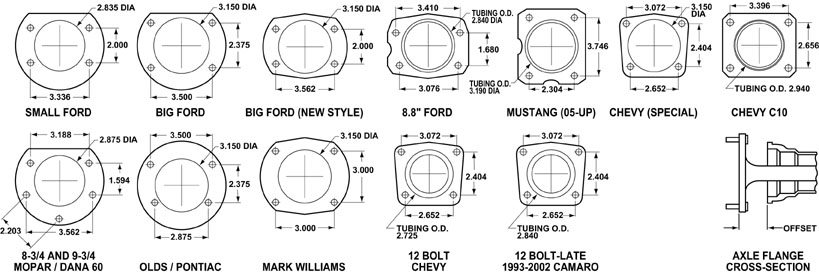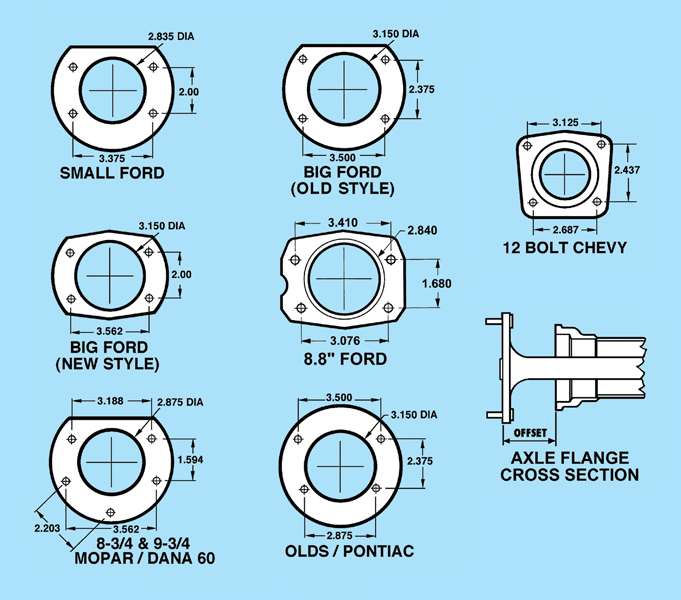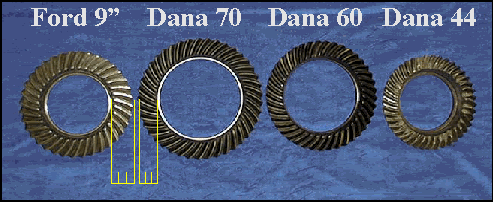http://www.moserengineering.com/Pages/D ... etrac.html
http://www.carcraft.com/techarticles/cc ... index.html
http://www.pirate4x4.com/tech/billavista/60_front/
http://www.moparmusclemagazine.com/proj ... index.html
http://www.pirate4x4.com/tech/billavist ... index.html
http://www.quickperformance.com/Suspens ... ep_44.html
http://chevellestuff.net/qd/rear_axle_info.htm
http://www.quickperformance.com/Technic ... easure.htm
http://www.chevytrucks.org/tech/ifs&rearend.htm
http://www.carnut.com/specs/frear.html
http://www.novaresource.org/axle.htm
viewtopic.php?f=50&t=9040&p=38048&hilit=ford+nine+inch#p38048
http://richmondgear.com/ringandpinion.pdf
viewtopic.php?f=45&t=757
http://www.wallaceracing.com/axledata2.htm
http://novaresource.org/axle.htm
http://www.teufert.net/other/rear%20end ... nsions.htm
viewtopic.php?f=71&t=1035&p=1929#p1929
http://www.chevytrucks.org/tech/ifs&rearend.htm
http://forums.corvetteforum.com/c4-tech ... -kits.html
http://www.markwilliams.com/
http://www.4xshaft.com/driveline101.html
http://www.ringpinion.com/Content/Axle_Dimensions.pdf
http://www.ringpinion.com/DiffBook.aspx
http://en.wikipedia.org/wiki/Dana_60
http://www.4x4now.com/gt0899.htm
http://www.4x4wire.com/toyota/tech/driveline/
http://www.streetrodstuff.com/Articles/ ... Page_2.php
http://www.moparmusclemagazine.com/tech ... index.html
http://www.moserengineering.com./Pages/axletech.html
http://www.crankshaftcoalition.com/wiki ... _a_rearend
http://dazed.home.bresnan.net/narrowinga9.html
http://books.google.com/books?id=aYB_fH ... &ct=result
http://www.bsfab.net/?p=22
http://cachassisworks.com/cac_featured.html
http://www.mittlerbros.com/rear_end_par ... sories.htm




viewtopic.php?f=71&t=1484
http://www.carcraft.com/howto/ccrp_0801 ... index.html
http://www.summersbrothersracing.com/Axles.htm
http://www.performancemarket.com/rearend.htm
http://www.brothersperformance.com/cata ... /cPath/114
viewtopic.php?f=71&t=945&p=1610#p1610
http://www.carcraft.com/techarticles/cc ... index.html
http://www.pirate4x4.com/tech/billavista/60_front/
http://www.moparmusclemagazine.com/proj ... index.html
http://www.pirate4x4.com/tech/billavist ... index.html
http://www.quickperformance.com/Suspens ... ep_44.html
http://chevellestuff.net/qd/rear_axle_info.htm
http://www.quickperformance.com/Technic ... easure.htm
http://www.chevytrucks.org/tech/ifs&rearend.htm
http://www.carnut.com/specs/frear.html
http://www.novaresource.org/axle.htm
viewtopic.php?f=50&t=9040&p=38048&hilit=ford+nine+inch#p38048
http://richmondgear.com/ringandpinion.pdf
viewtopic.php?f=45&t=757
http://www.wallaceracing.com/axledata2.htm
http://novaresource.org/axle.htm
http://www.teufert.net/other/rear%20end ... nsions.htm
viewtopic.php?f=71&t=1035&p=1929#p1929
http://www.chevytrucks.org/tech/ifs&rearend.htm
http://forums.corvetteforum.com/c4-tech ... -kits.html
http://www.markwilliams.com/
http://www.4xshaft.com/driveline101.html
http://www.ringpinion.com/Content/Axle_Dimensions.pdf
http://www.ringpinion.com/DiffBook.aspx
http://en.wikipedia.org/wiki/Dana_60
http://www.4x4now.com/gt0899.htm
http://www.4x4wire.com/toyota/tech/driveline/
http://www.streetrodstuff.com/Articles/ ... Page_2.php
http://www.moparmusclemagazine.com/tech ... index.html
http://www.moserengineering.com./Pages/axletech.html
http://www.crankshaftcoalition.com/wiki ... _a_rearend
http://dazed.home.bresnan.net/narrowinga9.html
http://books.google.com/books?id=aYB_fH ... &ct=result
http://www.bsfab.net/?p=22
http://cachassisworks.com/cac_featured.html
http://www.mittlerbros.com/rear_end_par ... sories.htm




viewtopic.php?f=71&t=1484
http://www.carcraft.com/howto/ccrp_0801 ... index.html
http://www.summersbrothersracing.com/Axles.htm
http://www.performancemarket.com/rearend.htm
http://www.brothersperformance.com/cata ... /cPath/114
viewtopic.php?f=71&t=945&p=1610#p1610
Last edited by a moderator:



